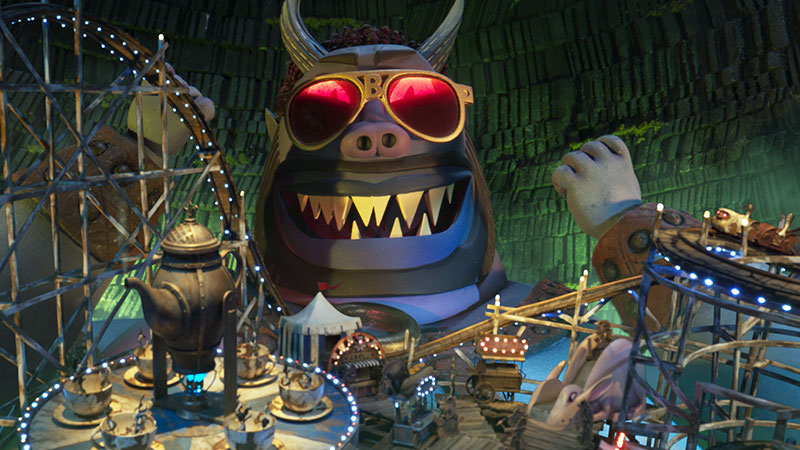VFX supervisor Marshall Krasser talks about the FuseFX team’s detailed simulations, 3D camera work and look development that help tell this ultimate horror story inspired by Edgar Allan Poe.

The Netflix miniseries ‘The Fall of the House of Usher’, based on the original short story by Edgar Allan Poe, follows the story of two siblings who are forced to confront their past when their children begin dying mysterious, violent deaths.
FuseFX worked on several sequences that are critical to the story and rely on the artists’ creativity to bring Poe’s dark tale into the imaginations of 21st century viewers. The studio’s Vancouver and LA based teams both started working on the project shortly after the shoot completed, in April 2022, and continued working alongside the production VFX supervisor Bret Culp and the showrunners over a 15 month period. FuseFX’s VFX supervisor Marshall Krasser, located near Vancouver, talked to Digital Media World about the complex sequences they created for the show.
A Party to Remember
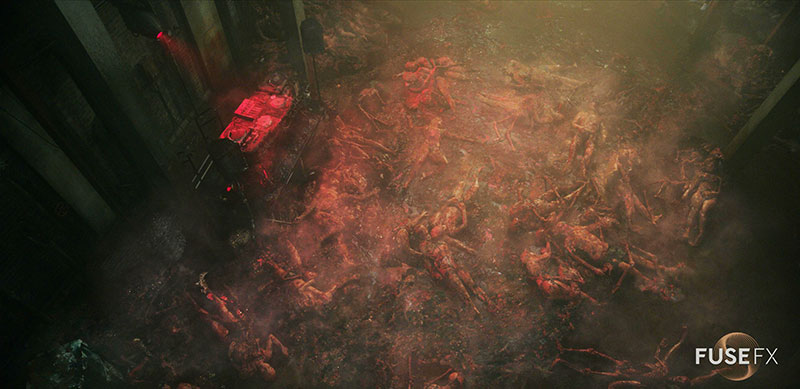
For episode 102, the FuseFX team created a 3D factory building that becomes the venue of the Fated Perry Party Acid Shower sequence, and then re-emerges later in the series. The party, an exotic, decadent affair, is a triumphant moment for the character Perry. The factory has been transformed into a nightclub setting with strobe lighting and a crowd of glamorous guests. As the shower begins to fall from the ceiling, the characters suddenly realise this is not the water shower they expected but rather a harsh, life-destroying chemical acid deluge that slowly eats away at their bodies.
“For Bret and the showrunners, the goal for this effect was to depict highly realistic, believable acid burning into flesh – not fantasy,” Marshall said. “The research was grim, and the result included different kinds of smoke rising from the burns. Working in Houdini, our team developed simulations for the look as it evolved over the length of the shots and, to make sure we could control the sims, used a depth matte in the render.
Isolated Looks
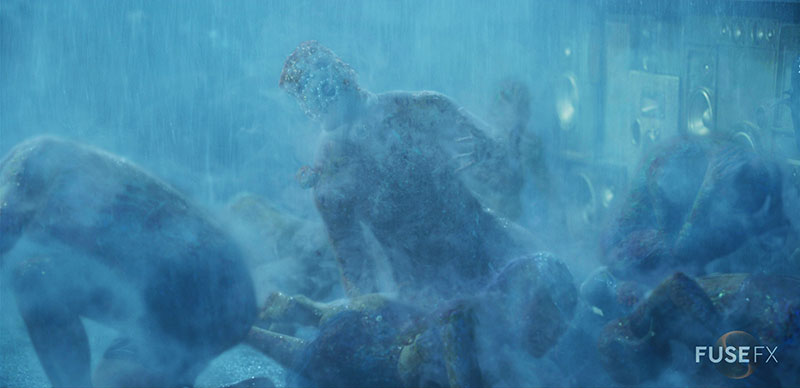
“We first created several looks and isolated the best of these. Each one was used for as many frames as necessary as the shot progressed, and was then replaced with the next, layering in the depth. The Digital Matte department helped paint in the different textures. By the end, we had identified four key beats, or stages, of the burn and smoke. Using these to gain initial approval from the production, our team could then focus on filling in the frames in between to achieve a logical transition that told the story.”
The burns resulting from the acid needed a fair amount of frame-by-frame manual treatment – warping and reshaping looks with exposed ribs and more. Marshall noted that a procedural approach wasn’t going to work in this case, especially since prosthetics had been added to some of the characters to visualise the damage, making the actors difficult to recognise. The strobing effect from the nightclub lighting actually worked in the artists’ favour by giving them a chance to focus on a special look or single character. They also varied the smoke simulations in a controlled way, ranging in looks from lacy and detailed as the smoke rose up from the burns, and then transitioning to a wispier look further on.
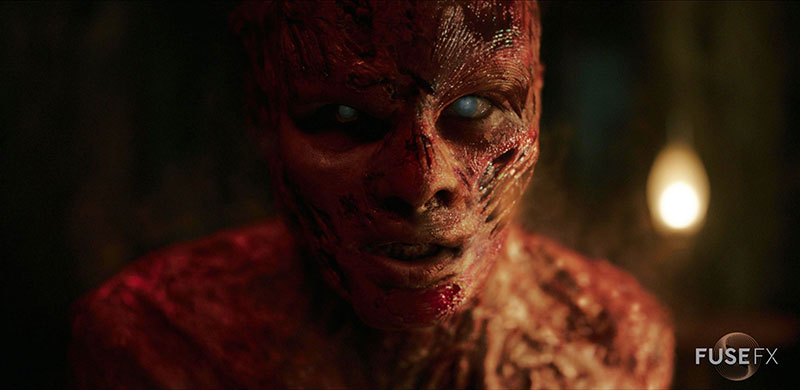
To closely associate these effects with the bodies, the team needed to create full-body articulated tracks. “It wasn’t a matter of re-creating actors in 3D and trying to animate them,” said Marshall. “But having that animated body track in the shot helped us produce accurate displacement and swirling of smoke, for instance, and to closely lock dripping effects from the burning flesh onto the bodies.”
Inside Out
Episode 107 brought the most technically and visually challenging sequence of Fuse’s work on the series. The team was required to take the 3D building they had created for episode 102 and destroy it with a wrecking ball, which was to be seen from inside the structure. Since there was no interior reference available of such an event, the team had to rely on exterior references and additional research to grasp the complexity of their task.
Marshall said, “First, the factory building had to be built in a way that prepared it for its ultimate destruction. On set, the building’s exterior consisted only of a set of steps leading up to a doorway, and a small portion of brick facade. Everything else was replaced with bluescreen, leaving our team, Bret and the showrunners a nearly blank slate for the building design. The initial criteria were about size – ensuring it was large enough to contain the earlier party sequence, as well as the destruction occurring in this later sequence. Together we worked through the look and design.”
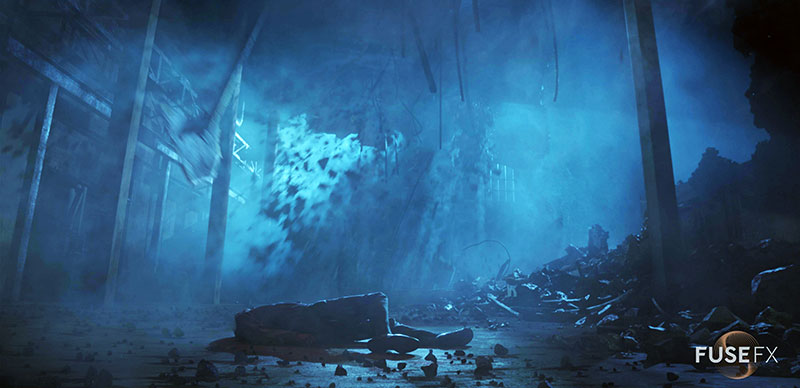
The practical set build of the interior was more substantial at ground level and included lower portions of the pillars, which Fuse extended upwards, also building the lofty ceiling – all ready for the dramatic break-up.
Camera Control
With the build in hand, the focus shifted to the camera work, for which continuity became the main challenge. First, because no previs had been prepared for the sequence, Fuse created their own kind of visualisation using post-vis techniques – such as laying in digital elements over edited footage, and placing blank slugs into the edit as placeholders for the missing frames – in order to determine the beats and the blocking for the camera work.
“However, as the project progressed and various requests for changes to the edit came through to us, each of those requests had a downstream effect on the shots and cameras that followed it. To ensure continuity from shot to shot in a way that supported the story, our team developed a new FX destruction simulation pipeline tool. This tool imitates how a large, complex destruction scene would be shot by a camera crew, that is, not just with one camera but from multiple cameras and positions at once,” said Marshall.
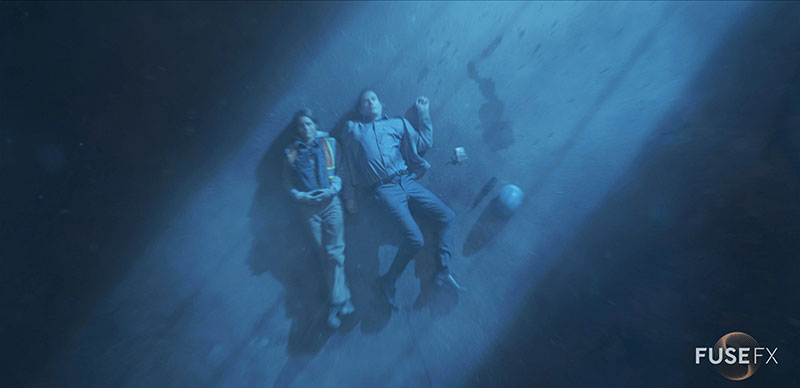
“If this crew were actually filming a real wrecking ball sequence like this one, they would be able to simply record the action as it really happened. DFX Supervisor Rav Brar wanted to find an accurate way to capture that same, natural continuity from the digital cameras’ POVs. Rav, Bret and the simulation team worked out how the events would unfold, as viewed from each camera. Since the currently available tools weren’t adequate for such a complex set-up, Rav developed this new sub-pipeline tool within the simulation software, Houdini, that allowed multiple FX artists to simultaneously receive updates from the other team members – automatically.”
Aftermath
So, as one detail was adjusted in a particular shot, it would be reflected down the line in the next shot, where a different simulation artist would then add their secondary effects to match. In short, their ‘continuity nightmare’ was solved by a system that continuously updated each camera angle. “The aftermath of a sim will change as soon as you change any parameter, of course, even slightly,” Marshall said. “But with this tool, we could take the cache from each shot and push that to the next artist who would pick up the flow and continue from there.”
The showrunners could nominate cameras as required to capture the action and actors, wherever that was occurring within quite a wide angle of something over 180°, as well as straight up toward the ceiling to illustrate the point of view of the character as he dies. To make all shots flow together, the team made a point of using the same lens kit as the production cameras to avoid creating a disconnect between the live action and the CG destruction shots.

Fuse also was responsible for answering the audience’s inevitable questions about the deadly pendulum that swings down from the factory ceiling and finally kills our protagonist just before the entire building collapses overhead. The sequence is dark, obscuring the ceiling detail, but explosions have rocked the old, unstable building, shaking lose a support at the top that drops down, catches on the cabling that starts the pendulum swinging. At this point in the film, the only way to explain those details is to visualise them through visual effects.
All simulations were created in Houdini. “Some of our sims took 12 to 20 hours per frame to play out and render,” Marshall said. “This sequence actually featured some of the most complex simulation work that I have had to manage so far in my career, and that includes 19 years at ILM. It was an unforgiving sequence that allowed us none of the small ‘cheats’ in the spots where you know they won’t be noticed – all details were on view from beginning to end, and in many ways, critical aspects of this story had to be told through VFX.”
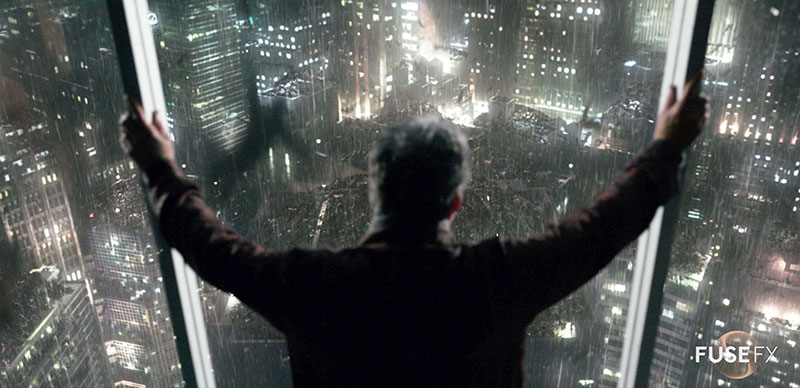
A Dark and Stormy Night
Another of those critical moments came when lead character Roderick gazes out the window of his high rise flat on a stormy night and sees dead bodies falling from the sky like the rain. The bodies represent the people whose deaths his pharmaceutical company’s empire has caused. On set, the actor looks out at a blue screen. Fuse created the entire view as a digital environment – the rain storm, cityscape and lights – starting with a digital matte painting for the distant background and moving up to a 3D model for the mid-ground to give the bodies a hard surface to hit, bounce from and accumulate on top of.
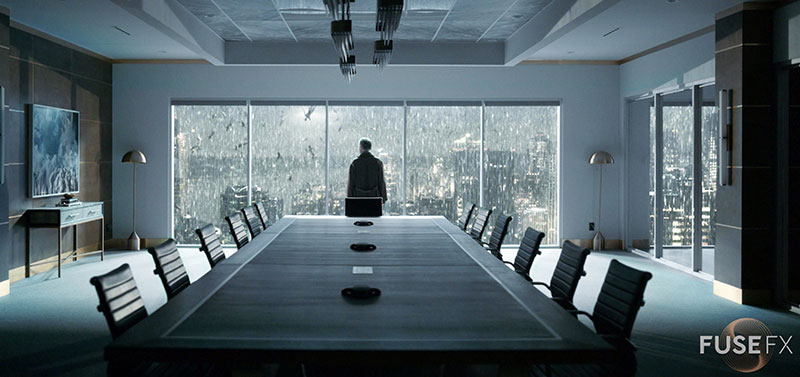
“Realism was again important here to evoke horror, but letting the bodies fall at terminal velocity would only have created an indistinct blur,” said Marshall. “They needed to be readable. We began with realism and then worked back to make sure the story was immediately understood. We worked with a two-part render – one with physically correct motion blur, and one with the motion slowed down – and then blended the two looks to suit.
“Our showrunners came up with the very good idea of using the lightning frames during the storm to clearly highlight the bodies for a moment, just long enough to freeze the motion and make them very visible, yet still feel very real. It worked almost like a strobe light.”
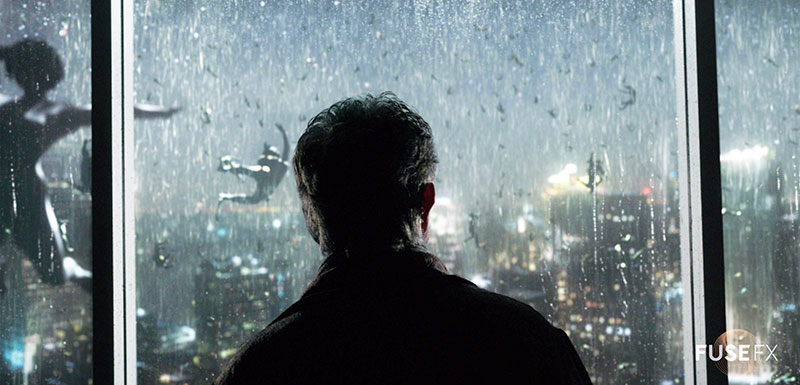
At the height of the sequence, bodies numbering in their thousands were falling from the sky, a number “beyond comprehension”. The team built all of them, designing 40 to 50 variations including different combinations of body shape, skin tone, clothing and other features, animated with varied slow tumbles. fusefx.com

















